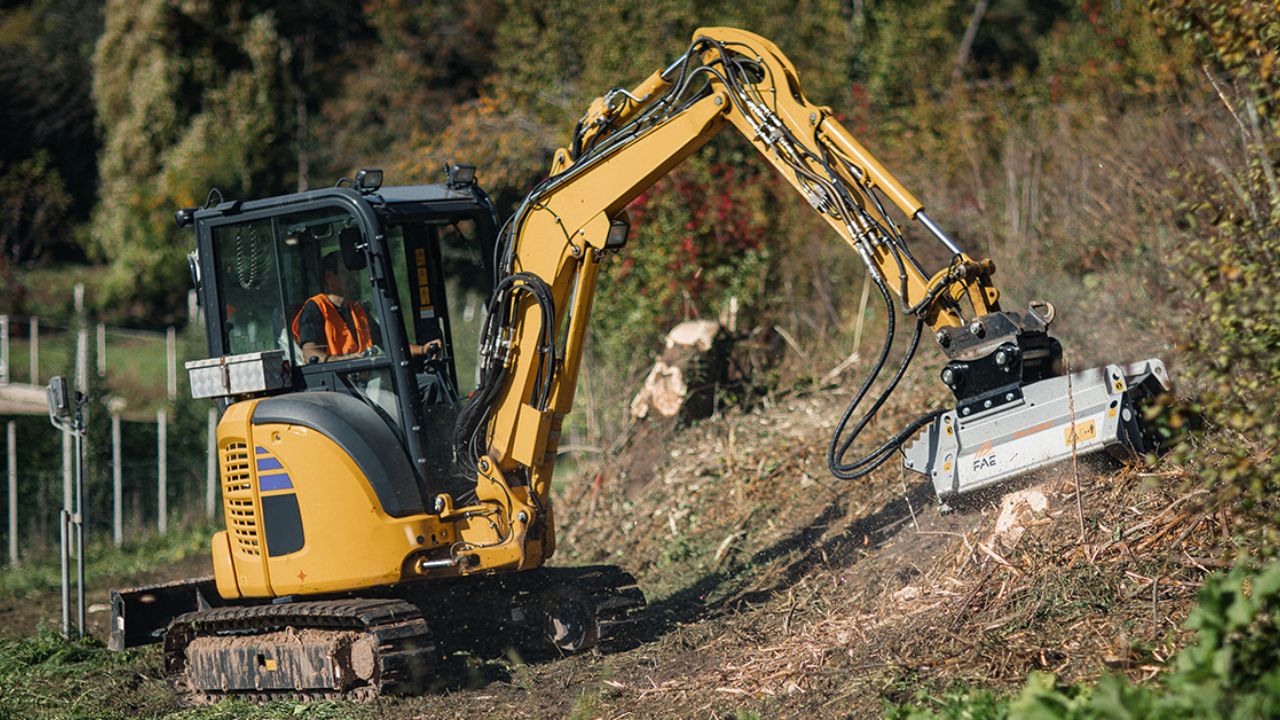The design and engineering of the fae mulcher teeth greatly determine the performance of the mulcher. These teeth are the most important parts of the cutter that chews trees, brush, and vegetation into fine mulch. Although the strength of the machine and the longevity of the parts used are vital, it is the tooth design that determines the efficiency of a mulcher in terms of cutting efficiency, the power used, and the life span in harsh working conditions. The knowledge of how the design of the tooth influences the overall performance of mulching is useful information to the operator, contractor, and forestry professional who would want to get the best performance possible.
The Role of Tooth Geometry
The tooth geometry of the FAE mulcher is important in cutting the material and waste management. The angle, edges, and curvatures of each tooth are designed in such a way that they provide maximum penetration into the material. A more accurate cutting edge will result in quicker and smoother cutting through wood and vegetation, and the resistance the machine experiences is less. This is translated directly into easier running, a decrease in vibration, and strain on the hydro system.
FAE engineers also develop their sharpness and strength in the precise geometry of their teeth. The shape will dictate the orientation of the tooth to the wood, the depth of cutting, and the discharged chip. Optimizing the angle in the right way will make the tooth slice but not tear, so less energy will go to waste, and the mulcher will have maximum throughput. Conversely, ill-shaped or damaged teeth may lead to the occurrence of uneven cuts, consumption of more fuel, and hasten the wearing out of other machine parts.
Tooth Spacing and Tooth Placement Effect
FAE mulchers are constructed in such a way that the tooth dimensions and pattern of arrangement are precise in order to provide uniform cutting and smooth flow of materials. The positioning of the teeth influences the interaction between the rotor and the vegetation and the resulting size and uniformity of the mulch. Even spacing can also lead to the distribution of the load, whereby there is a balance in the distribution, which means that machine vibration is minimized and that the cutting cycle will be smoother.
In case teeth are positioned too near each other, they may intersect in their cutting direction, resulting in unwanted friction and low productivity. On the other hand, when teeth are spaced too wide, the machine can leave uncut spots or can also make many passes before the required finish is attained. The strategic rotor and tooth designs at FAE are created so that the aggressiveness to cut and smooth operation is maintained at the optimum performance and fuel consumption.
Type and Application-Specific Design
FAE is available in several types of teeth (Type C, Type E, and Type G series), each designed to meet the requirements and conditions of a particular application. An example is the Type C teeth that are used in general-purpose mulching, which provide a good balance between cutting speed and long life. Their streamlined profile is perfect in finer mulch and smooth finishes, but Type E teeth are hardened against rocky or abrasive conditions. Type G teeth are strengthened.
The right choice of type of tooth to use in the working place is a very important factor in the operation of the FAE mulcher. An overly aggressive tooth can wear unnecessarily and consume fuel, and a weaker form in the rocky terrain can break down and require rest. Thus, an appropriate design of the tooth will guarantee the highest performance and prolong the equipment’s life.
Effect on Productivity and Sustainability
Finally, a tooth design will have a direct effect on the efficiency, fuel consumption, and the life cycle of the mulcher. Effective teeth design makes it a more efficient cut, leading to a decrease in engine load and pressure of the hydraulic. It not only conserves fuel but also reduces the wear of other parts, such as bearings and belts. Uninterrupted cutting performance will also mean that operators will be able to finish their work more quickly and accurately, which contributes to higher productivity.
Also, easy-to-maintain and easy-to-replace teeth can contribute to the increased reliability of FAE mulchers in the long run. The modular tooth systems offered by FAE enable replacing them in a few minutes without disassembling significant rotor components, which saves time and maintenance expenses. Together with great design and high-quality materials, these characteristics help in creating a machine that can provide strong and stable performance in the most demanding forestry and land-clearing activities.
Conclusion
FAE mulcher teeth design is not just a design issue, but a convergence of material science, engineering accuracy, and the use of the functionality of the blade in the field. Geometric, carbide bonding, spacing, application-specific tailoring, and all other facets of tooth design determine the efficiency of a mulcher. Investing in well-designed FAE mulcher teeth will provide the operators with a faster cutting rate and a lower cost of operation, as well as enhance the durability and reliability. In a fierce forestry and land clearing environment, the design of teeth is the most important in order to realize the full potential of FAE mulchers.

